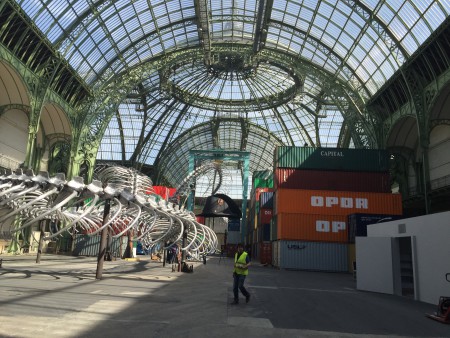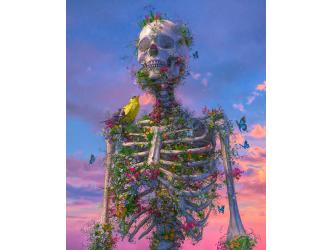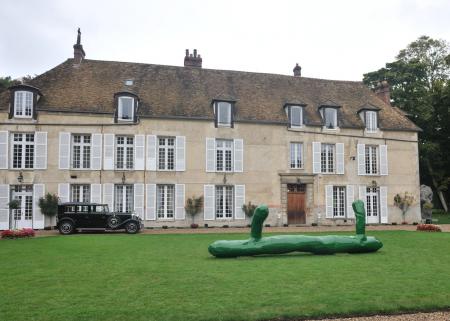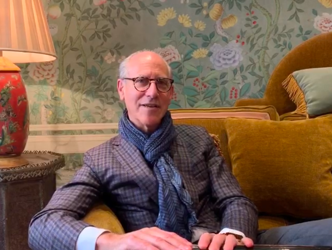Every two years at the Grand Palais in Paris, Monumenta is an act of creative bravura and a truly colossal show in the international contemporary art calendar. It’s a battle of the titans, in which an artist has to struggle to assert himself inside and against a sublime but giant space: the nave (13,500 m2, 35m tall) crowned by a monumental glass dome with majestic iron frames. The Franco-Chinese Huang Yong Ping (born 1954) is someone tiny in stature but mighty in terms of knowledge and work.
Though under 1.60m, Ping is nonetheless capable of defeating the most ferocious monsters purely by strength of spirit, just like in the legends.
Moreover, his work employs a range of imagery that belongs to the realm of fables. This time around, the main protagonist of his installation in Paris is a serpent.
Not a real serpent, mind you. More like a sea serpent of which only the skeleton remains, the sort you’d find in the Natural History Museum. (According to the show’s curator Jean de Loisy, Ping was genuinely taken aback when he first visited to the Museum d’Histoire Naturelle in Paris).
At the Grand Palais, his aluminium serpent skeleton is 254 metres long and weighs 133 tonnes. It rests on no less than 305 containers, which take up a large part of the space. Stacked on top of each other, in places they’re 17 metres high.
Jean de Loisy (he is also the President of Palais de Tokyo) explains the symbolism of this massive installation in the Grand Palais:
In fact Ping has quite simply recast this extraordinary building as an industrial landscape: it’s a view of the docks of a large port, minus the sea. But at the summit of this pile of containers is something of an anomaly. Here he’s placed a giant replica of one of Napoleon’s bicorne hats (5.3m tall).
Huang Yong Ping describes his fascination for Napoleon:
You’d be hard pushed to describe the piece as beautiful; or if it is beautiful, it would be of the same kind of beauty as a factory in the middle of Paris.
But it’s effective and rich in meaning. The Huang Yong Ping installation can be read like a rebus. One discovers in it a symbol of Empire and conquest: the cocked hat. In France, as in China, Napoleon is an object of fascination. The serpent evokes transformation, the evil creature which in Western culture made Adam and Eve take a bite the apple. In Chinese pharmacopeia, on the other hand, it provides a source of remedies.
It’s about China as factory of the world, and about old, sophisticated Europe.
This 980-tonne work baptised Empires is an allegory of our world, of its geo-strategies and eco-strategies linking East and West. And Huang Yong Ping, as a giant of thought brought to life in three dimensions, makes the link between the two, without judgment, without prophecy.
In his celebrated book The Art of War, which was one of the things inspired Ping’s Empires, its author Sun Tzu decreed, ‘The art of war is to submit to the enemy without fighting.’ The giant serpent (of the economy) has unquestionably adopted this modus operandi…
Until 18 June
Donating=Supporting

Support independent news on art.
Your contribution : Make a monthly commitment to support JB Reports or a one off contribution as and when you feel like it. Choose the option that suits you best.
Need to cancel a recurring donation? Please go here.
The donation is considered to be a subscription for a fee set by the donor and for a duration also set by the donor.












